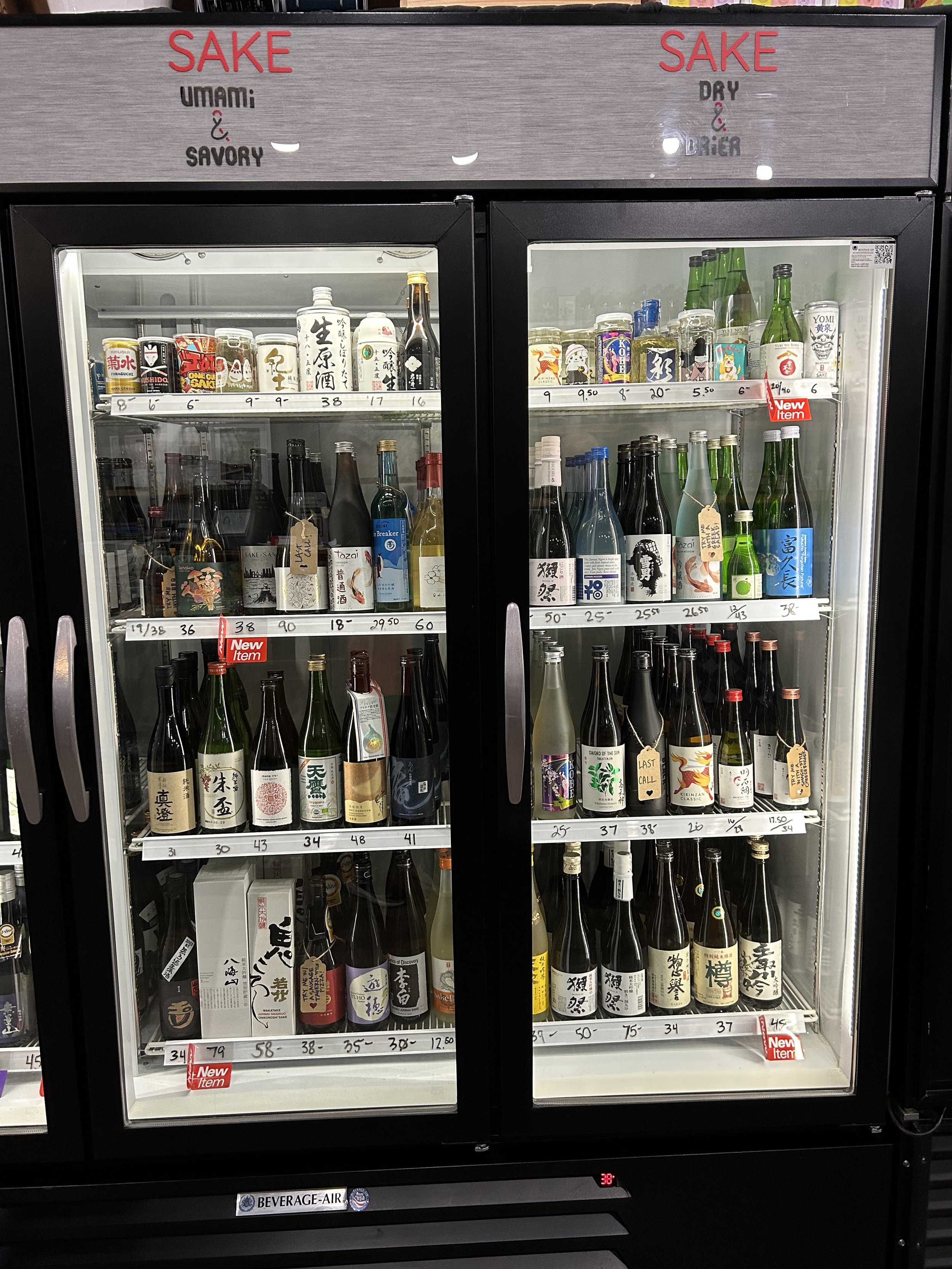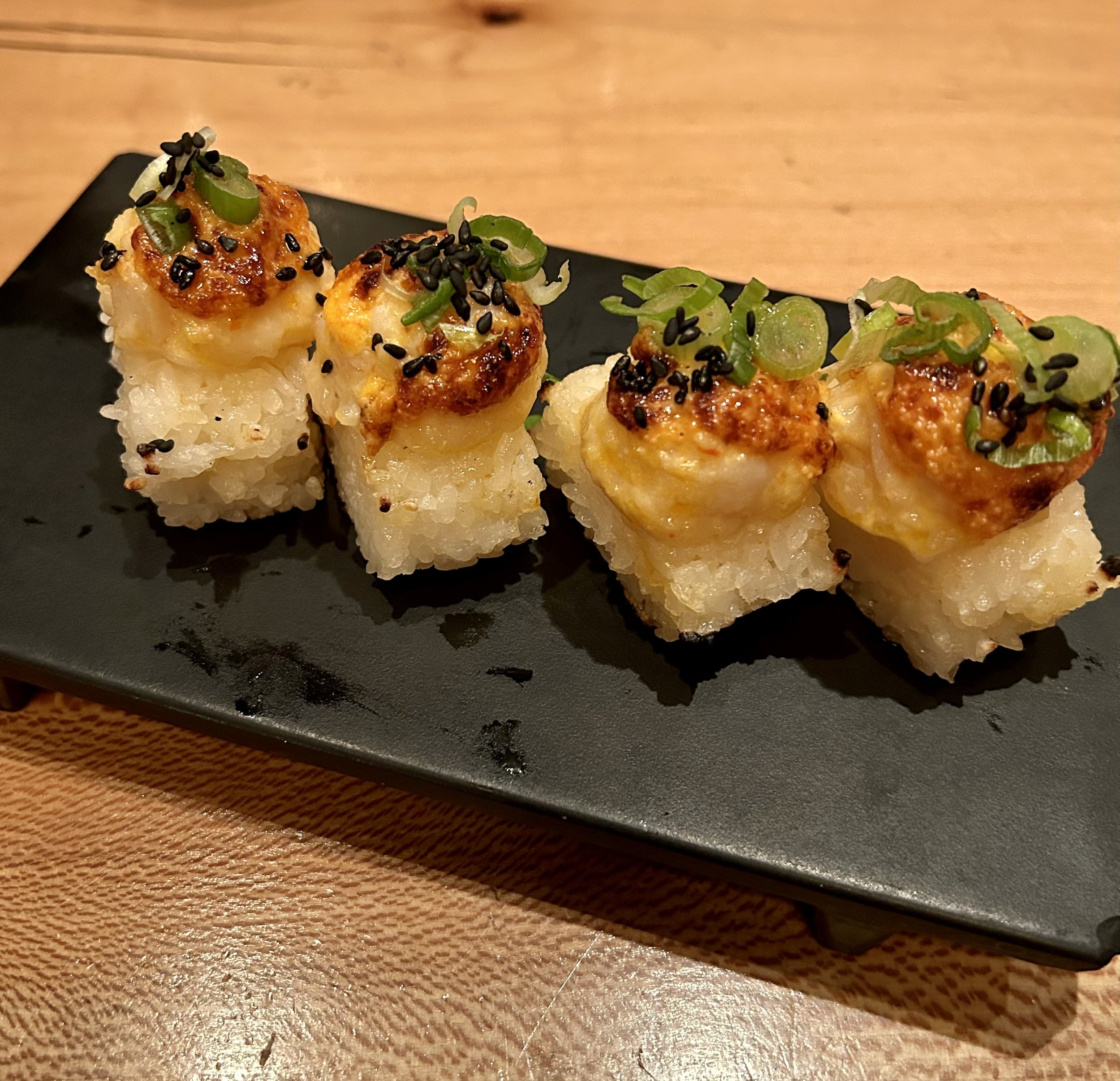Chicago Field Trip: The Daimon Shuzo + Sushi-san Sister City Sake Collab
Sake Sommelier Daniel Bennett of Chicago’s Sushi-san and The Omakase Room. Photo courtesy of Lettuce Entertain You.
A fun and unexpected collision between sake news and family history occurred in late October in Chicago, and I’m checking in to tell you about it.
The saga starts in mid-August, when word arrived in my inbox that the San division of the Lettuce Entertain You restaurant group had teamed up with Daimon Shuzo in Osaka to create a private label sake called “Sake-san.”
It just so happened that I was planning a fall mini-family reunion in Chicago, where my parents first met and where one of my uncles still lives. So after a visit to the Chicago Art Institute, we dropped by the nearby River North branch of Sushi-San, expecting to have a few hand rolls and taste this sake that was unique to Chicago.
We were unprepared, however, for the high-octane sake-plus-personality blitz that is Daniel Bennett, and the show that he put on. The irrepressible performance artist-turned sake sommelier was on hand to greet us when we arrived, and brought out the much-anticipated bottle. His enthusiasm for sake is so infectious that not only has he helped make Chicago one of the best cities in the country for sake, a few weeks ago he was named finalist for the 2024 Jean Banchet Sommelier of the Year Award for his work at Sushi-san.
Photo courtesy of Lettuce Entertain You.
When Bennett presented Sake-san, we were first taken by the label, created by Lettuce Entertain You’s illustrator Alex Payne and graphic designer Tia Swenson. It depicts a hand-drawn, black-and-white illustration of the skylines of the two cities connected in the middle by Osaka’s Konohana Bridge. The pairing of the two cities is apt for many reasons. First, Osaka and Chicago are sister cities. Second, they share a hospitable, food- and drink-loving sociability. The 大阪食い倒れ (“Osaka kuidaore,” or roughly, “Osaka food obsessed”) is a well-known type in Japan. Both places are second-city in size but not in originality or personality.
The Chicago Japanese Garden. Photo by Steve Geer.
The cities are also tied via Chicago’s Japanese Garden at Jefferson Park, known at times as the Osaka Garden. The Japanese pavilion erected there in 1893 for the World’s Columbian Exhibition was a gift from the Japanese government. For me, there’s a personal connection too: In the English-language translation of a book of tanka poetry that my grandparents wrote, which I’m now preparing for publication, they make several fond mentions of Jackson Park, the pavilion, and its vermilion gate.
Sake-san is brewed with Yamada Nishiki rice milled to a 55 percent ratio, and displays a classic ginjo fruitiness and elegance, but with a undercurrent of bold umami. Notes of honeydew and white flower are undergirded by a whiff of steamed white rice and cocoa. That underlying boldness is in keeping with the city of broad shoulders and its takoyaki-loving Osaka counterpart.
A konbini on American soil!
A portion of Konbini & Kanpai’s sake selection.
The special sake is being served at all Sushi-San’s three locations, The Omakase Room at Sushi-san, and four Ramen-San locations. The only retail outlet where you can pick up a bottle is the fantastic Konbini & Kanpai in Chicago’s Lakeview neighborhood, which we had the chance to visit for a Nikkei family meet-up with some amazing Japanese American community leaders. Owners Jun-Jun Vichaikul and Naomi Hattori channeled their love for Japanese convenience stores and drinks culture to create this fun space for sake, whisky, beer, wine, and Japanese snacks.
Bennett says that sushi was his gateway to sake, and discovering the two was the first time he linked food to culture: “My parents' idea of a night out to dinner was either Ponderosa and Chi Chi's.” During his dozen or so years tasting and serving sake at various restaurants and izakaya, including Japonais by Morimoto and Azumi at the Four Seasons Baltimore, Bennett had come to realize that very little of what the 1,100 or so sake breweries in Japan produce ever makes it to Chicago. “And the ones that I can choose from have already been curated, most often with only broad appeal in mind,” he adds.
A former performance artist, Bennett has no problems emoting, here about a stellar all-natural selection of sakes on the Sushi-san list.
So he made it his mission to forge this cross-cultural brewery collaboration. Bennett first set his sights on Tentaka Shuzo’s Organaka sake. It was the first sake to be labeled certified organic by the USDA, and when warmed, Bennett, says, “is unstoppable.” But the parallels with Osaka and Daimon were too strong to ignore. So he traveled to Osaka in Spring of this year and was taken with the beauty of the shuzo and with Daimon-san’s personal and family history, the brand, and the sense of place he found there. (Check out my post on Daimon’s outsized influence on the early internationalization of sake). “The next time Daimon-san comes to Chicago, we hope to go to some famous blues bars as he is an avid Jazz fan,” says Bennett. He credits Monica Samuels and Dila Lee of Kome Collective for making Sake-san happen.
Umami scallop aburi sushi.
A little homage to women in sake plus sake that Bennett put together.
We had lots of opportunities to sample Sake-san’s pairing capabilities, too. My favorite was with the classic toro-oshinko (tuna belly and pickle) temaki, aburi (flame cooked) spicy tuna, and umami scallop aburi. But it was also great with the beef ‘n bop, a delicious take on bibimbap. Bennett says his favorite pairing is with the tako taco, a combination of spicy octopus and crushed avocado in a crispy nori shell. Sushi-san sake was also perfect with the delicious grilled fish (juicy Faroe Island salmon marinated in white miso for three days, in this case), rice, and miso soup that Bennett planned for us, knowing this simple trinity is my favorite.
Beef ‘n Bop.
While Bennett will never forget his first sake love, Natutotai’s “Red Snapper” ginjo nama genshu (“ginjo on steroids”), he is now into naturally sparkling sakes with frizzante bubbles a fraction of the size of those in sparkling wine or champagne; he loves “the electric feel” they have on the palate and how they work as a delicious palate cleanser between bites of sashimi.
In the anteroom of The Omakase Room.
Bennett and Omakase Room partner Darryl Smith offered us a peek at the beautifully lit and appointed 10-seat Omakase Room upstairs, a modernist get-away where Chef Kaze Chan offers an 18-course menu and four different optional pairings. If time and budget were no option, this would be a lovely place for a celebratory dinner.
The San restaurants sold out of their first Sake-san release of 120 cases in less than three months, but do not fear; the latest drop from Osaka arrived last week. I hope all of you who live in or will be visiting Chicago soon will get to try it!











